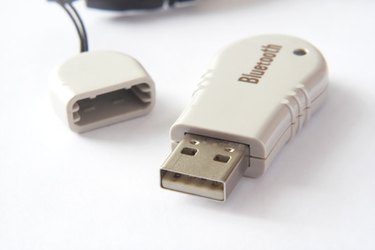
Introduced in 1995, universal serial bus, or "USB," computer connections have revolutionized the way external devices are connected to computers, ending the reign of bulky serial ports and parallel ports. USB has grown into the most widely accepted and commonly used standard in computing. In recent years wireless connectivity has increased in popularity, and in 1998 Bluetooth was introduced to eclipse all previous wireless technologies. In the early to mid 2000s, Bluetooth was introduced into cell phones, laptops and many other devices. When the need arises, converting USB connections to Bluetooth ones is a simple undertaking, assuming the device to be connected is Bluetooth compatible.
Step 1
Load the USB Bluetooth adapter's software on the computer according to the manufacturer's instructions. Ensure that your system is compatible with the software and the Bluetooth device before purchasing it. These specifications are generally printed on the device packaging. Most Bluetooth adapters require Windows XP or higher or Mac OSX or better.
Video of the Day
Step 2
Plug the USB Bluetooth adapter into an onboard or powered USB port (not a USB hub or unpowered satellite port). The computer should recognize the device and the manufacturer's software should start.
Step 3
Select the option on the software that allows you to wirelessly search for Bluetooth compatible devices. This option is often labeled "Search for Device" or "Find Device."
Step 4
Power on the Bluetooth device you wish to connect to your computer and, following the manufacturer's instructions, allow it be "found" wirelessly by your new Bluetooth adapter.
Step 5
Enter the device "Code" or "Password" when prompted to do so. This information is created by the Bluetooth device's manufacturer and should be easily found in the literature provided with the device. This is a security feature provided for Bluetooth devices to avoid an unwanted Bluetooth wireless pairing that could compromise, among other things, personal or financial information.
Step 6
Check your new wireless Bluetooth connection by attempting to briefly use your Bluetooth device. Many Bluetooth adapters' software will allow you to save your connections or to automatically recognize Bluetooth devices when they move within the range of your USB Bluetooth adapter. This will make subsequent connections easier and faster.
Video of the Day